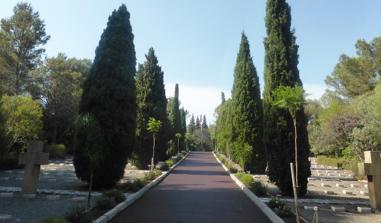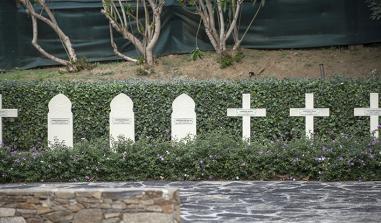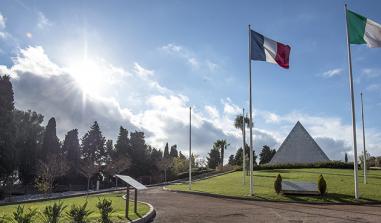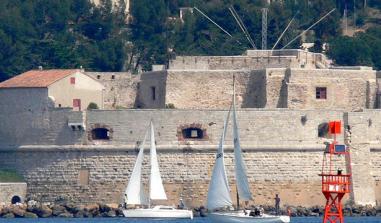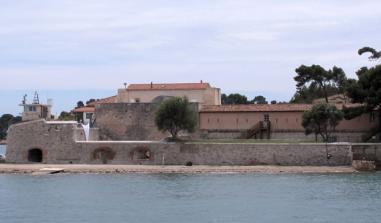The Citadel of Saint-Tropez
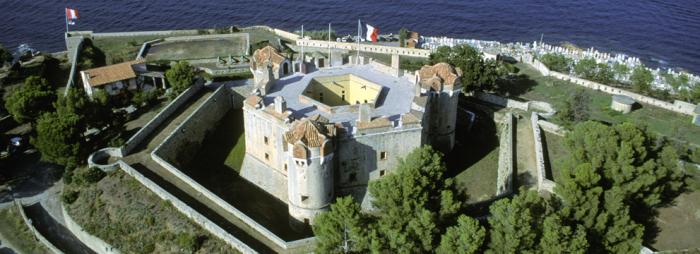
The Citadel of Saint-Tropez. Photo ECPAD
As well as the glamour and glitz and the façade of the local 'gendarmerie' that played a starring role in French cinema, Saint-Tropez boasts a long and eventful historical past, of which the most obvious example is the citadel that dominates the town.
As well as the glamour and glitz and the façade of the local 'gendarmerie' that graced the French silver screen, Saint-Tropez boasts a long and eventful historical past, of which the most obvious example is the citadel that dominates the town.
A first 'enceinte' or protective wall with its bastioned structure was built around the town in the 15th century for the dual purpose of protecting the site from invasion and to ensure the King's authority over the inhabitants. In 1589, Maréchal de Villars supervised the construction of a small fort on the hill known as 'colline des Moulins' overlooking Saint-Tropez. This fort was destroyed in 1595, but the military engineer Raymond de Bonnefons chose the same site to build further defensive structures from the start of the 17th century.
1607 saw the completion of the citadel's present-day keep, a thick-walled hexagonal tower concealing a huge interior courtyard, accessible via a drawbridge, and strongly defended by an artillery platform and three round flanking turrets with cannon embrasures. A few years later, a bastioned outer wall was built around the keep and lined with a system of moats and counterscarps. Situated between Toulon and Antibes, Saint-Tropez became a strategic port of call in the protection of the French coastline, and all its defences faced out towards the Mediterranean. In 1637, the inhabitants of Saint-Tropez saw off a surprise attack on the port by around twenty Spanish ships and four royal navy vessels. No major changes were made to the citadel until the 19th century, when military engineers gave the structure its current silhouette. The outer walls were pierced and adapted to store gunpowder, and the entry to the internal courtyard was rendered accessible to vehicles, via a bascule drawbridge designed in 1830. During World War 1, the fortified town became a detention camp for German prisoners, who carried out various public works in the local area. From 1942, the citadel was occupied by Italian troops, then by the Germans. The citadel and the town was liberated by the Allied troops and the First French army after the landing on the Mediterranean beaches between Saint-Raphaël and Hyères in August 1944.
The citadel is located in a harmonious setting of wooded hills, accessed by following a footpath lined with eucalyptus and rosebays, where it is not unusual to find wild peacocks. Since 1958, the edifice has housed a naval museum comprising of a dozen rooms offering the visitor the opportunity to discover the naval heritage of Saint Tropez from antiquity to the modern day. The permanent exhibition presents archeological submarine equipment, models, engravings and paintings of boats, as well as a collection of documents recording the extraordinary lives of famous local people: two rooms are devoted entirely to Pierre André de Suffren, bailiff to the King, and Jean-François Allard, an officer under Napoleon who became generalissimo of the forces of an Indian Prince. Naturally, the history of the Allied landing is also covered, in particular courtesy of exceptional military staff maps from the period retracing the progress of the liberators. Access to the upper terrace of the museum offers visitors a superb panoramic view. Looking towards the sea the view of the Gulf of Saint-Tropez and Sainte-Maxime is extraordinary with a combination of jagged rocky coastline, headlands, bays, creeks and islands. Looking inland, when the hot mistral wind is blowing, the view spans both snowcapped mountains and the red rocky landscape of the Estérel hills. On the terrace, four Spanish cannons seized from the enemy continue to symbolically scan the horizon in anticipation of an attack that will no longer materialise.
Access to the Citadel of Saint-Tropez 70km from Toulon via Hyères by the A 57, then the N 98 to Bertaud, and the D 98a. 100km from Nice by the A 8 (exit no. 38 Fréjus, St-Raphaël), then the N 98 via Sainte-Maxime, and the D 98a. 120km from Aix-en-Provence via Brignoles by the A 8 (exit no. 13 Le-Cannet-des-Maures, Vidauban, La Garde-Freinet), then the D 558 to Bertaud, and the D 98a. Visiting the naval museum Open all year round except Tuesdays and some public holidays. Possibility of guided tours (also in English during the tourist season). Saint-Tropez Tourist Office Quai Jean Jaurès 83990 Saint-Tropez Tel. 33/ (0) 494 974 521 Fax 33/ (0) 494 978 266 Minitel 36 15 VAR e-mail: tourism@ot-saint-tropez.com
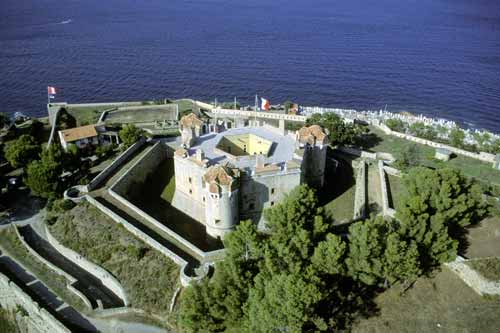
The Citadel of Saint-Tropez. Photo ECPAD
Practical information
chemin des graniers 83990
Saint-Tropez
Tél. 04.94.97.45.21Fax 04.94.97.82.66
Ouvert toute l'année sauf le mardi et certains jours fériés. Possibilité de visites guidées ( également en anglais pendant la saison touristique).





